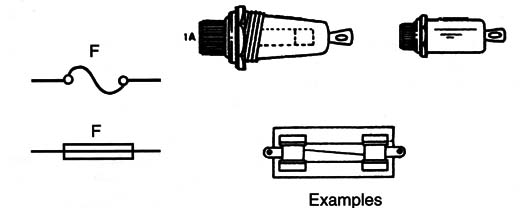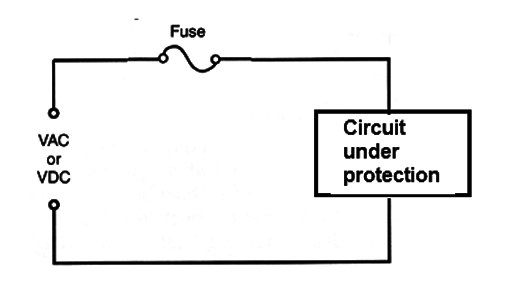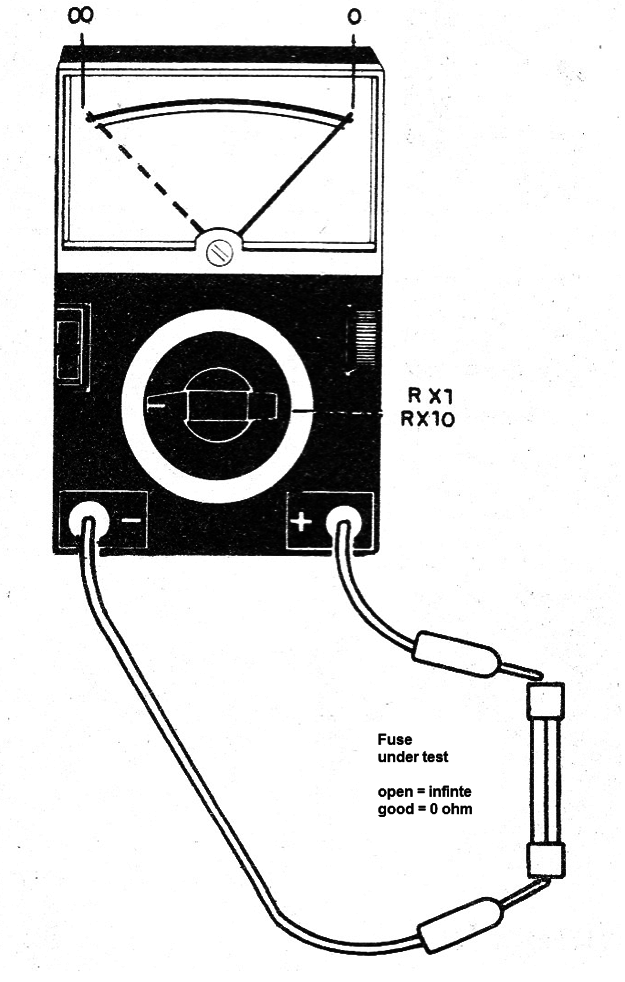They operate based on the oId principle of a chain being onIy as strong as the weakest Iink. It is easy to see that the best way to protect everything else was to make one Iink deliberately weakest so it would faiI first.
The name fuse comes from fusible link, as suggested by the previous analogy. A fuse is designed to conduct its rated current and act as a conductor. When the current increases beyond the rated vaIue the fuse melts, acting as an SPST switch and opening the circuit.
Symbols and types
Figure 1 shows the symbols used in electronics diagrams to represent a fuse and also the types of common fuses found in electronic equipment.

These fuses are basically formed by a piece of wire in which thickness is the determining factor of the meIting current.
Where they are found and how they are used
The fuse is wired in series with the device or circuit to be protected as shown in Figure 2.

It is usual in some electronic equipment to have several fuses, each one protecting one stage or part in such a manner that if one stage fails and the corresponding fuse melts, the other stages can continue their normal operation unless they are interdependenL
Specifications
The most important specification of a fuse is the meIting current or the current that causes the fuse to burn. This nominal current can be specified in miIiamperes or amperes according to the value and application.
When replacing a fuse, never use a unit wíth current specification Iarger than the original The specification of current must be the same. If a Iarger fuse is used and a failure occurs in the circuit, increasing the current to a dangerous value, the fuse may not be the first component to burn out. It may be some component of the circuit or possibly many of them that wiII burn.
Other specifications of a fuse to consider are how fast it burns when problems occur and the highest operation voltage. In some electronic cicuits the fuse is a smaII piece of bare wire placed between two terminals.
The wire gauge is chosen to melt with the desired current.
How to Test a Fuse
A good fuse must present a Iow electric resistance To know if a fuse is in good condition, test its continuity-whether it can conduct the electric current.
A high resistance means a burned fuse (open circuit). A good fuse measures a resistance near zero when tested. A multimeter can be used for this task.
Figure 3 shows how to use a multimeter for this test.





